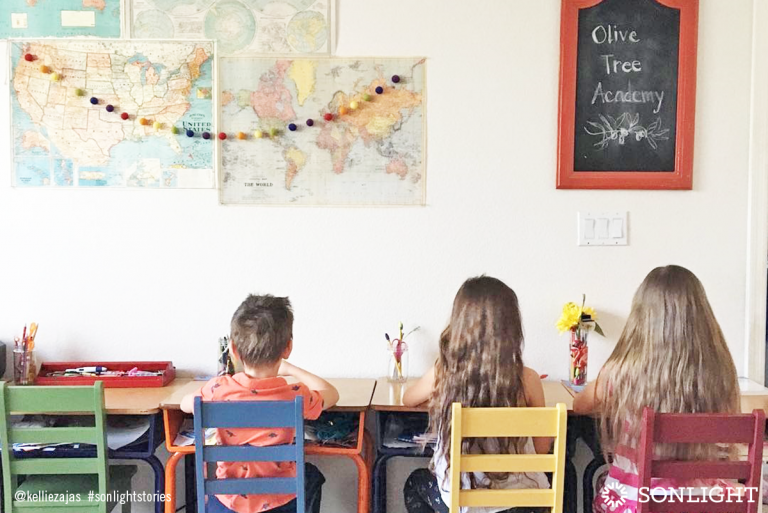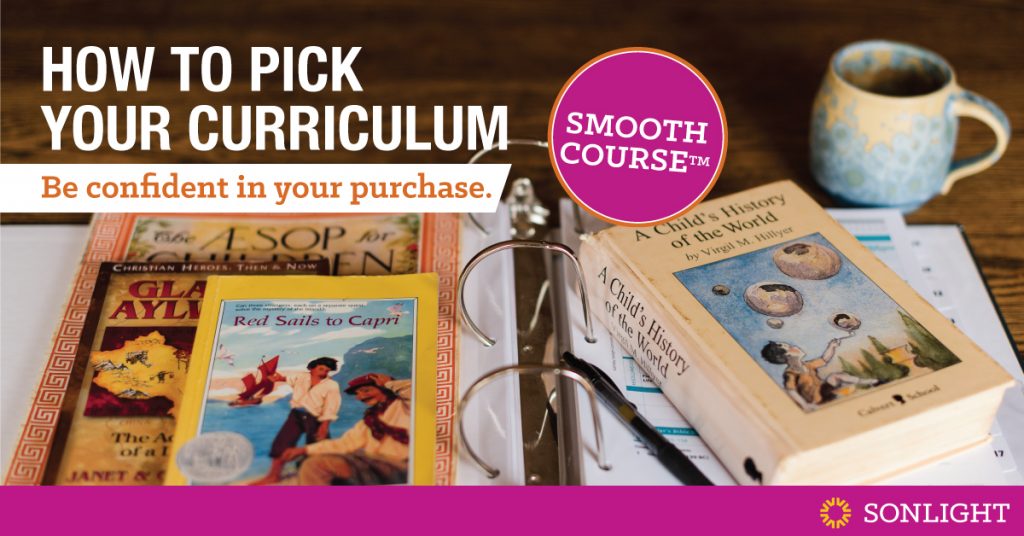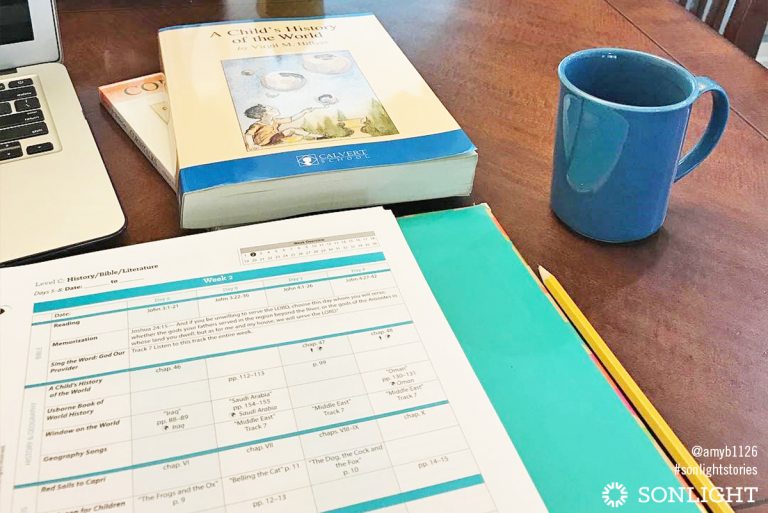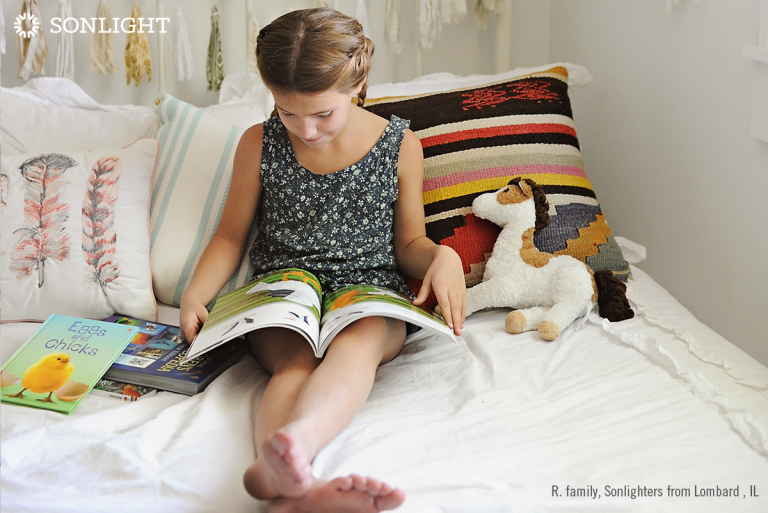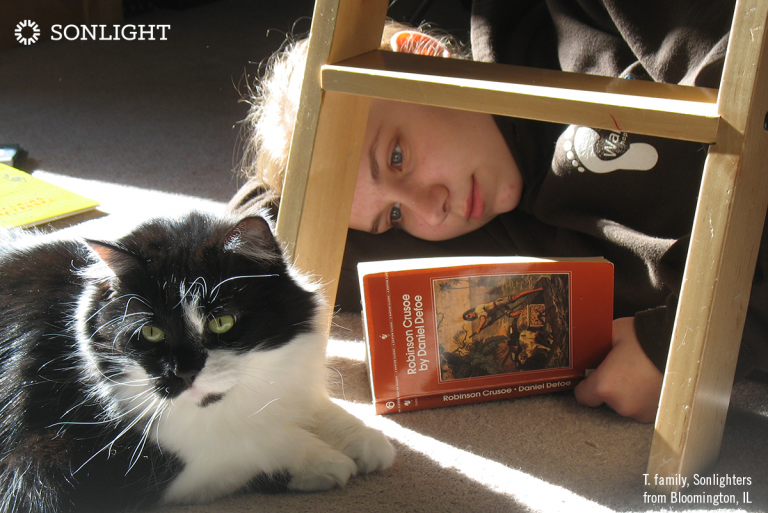
When I tell people that I homeschool my 10 children, they nearly always say, "You must be very organized!" I smile and pinch my husband so he doesn't reveal the truth that I'm not a terribly organized person. Even though I have never used a fancy planner to plot out my life out on paper, I have discovered three key secrets to managing my large family homeschool. Maybe they will help you, too!
Continue reading below or listen here:
1. Keep Assignments Visible on a Giant Chart
My friend's house is orderly and oozes with learning. A map puzzle is neatly assembled under a clear tablecloth, and history study sheets hang on the wall behind the dining room table. But as a second generation homeschooler, I am not keen on having my house look like a school room. I opted out of the maps hanging in the dining room and a timeline along the living room ceiling.
What we do have—clearly visible in our house for all to see—is a wipe off board with our daily schedule.
This whiteboard has changed over the years. The early version was to help keep me on track. It listed our subjects and page numbers of books so I could keep moving forward with a glance.
As the kids grew, they started to have individual lines on the chart: school subjects, reading assignments, chores, laundry days—I even scheduled showers one year. It became an at-a-glance checkoff list. I still check their work to see that it is getting done, but the schedule board helped keep people from piling up in front of me asking the dreaded question, “What do I do next?”
2. Keep 4-6 Weeks of Our Schedule in a Small Binder
Last year we used three Sonlight History / Bible / Literature (HBL) programs: HBL A, HBL F, and Sonlight 400. Keeping up with three bulky Instructor's Guide (IG) binders was troublesome, so to make moving from student to student easier, I put the current week of each binder into a single, 1-inch binder.
This adjustment made it easy to check in with kids throughout the day, moving from room to room without hauling three heavy binders. Having everything at my fingertips made it simple to answer questions about any level of work without a huge interruption to find my binders and thumb to the appropriate weeks. When we travel to Grandma’s house for Science, it is easy to gather books from the schedules I see in my one manageable binder.
In the past when my children all used the same program, I would pull about six weeks of work from the individual HBL and put it in a small binder. This would be our gauge for school breaks. When we finished the work in the binder, we knew it was time to take a short break or have a reward field trip.
3. Be Open to Input and Cues from Your Children
I learned early to follow cues from my kids about how to structure the school day. For example, when my son was little, we would butt heads over Math. Sometimes it would take hours for it to be completed, and other times he would get it done with far less help. When I started looking into why, I discovered that when we did math late in the day, it took the longest. We solved the whole dilemma by making Math the first subject of the day. A little observation and flexibility made our days go more smoothly for both of us.
Another example comes from our homeschool room. I was so excited to have all of our learning in one place in our newly finished basement! I moved all of our bookshelves and tables into this homeschool space, picturing how we would be one cozy family, learning side by side. The trouble was that my teens had moved into more independent work, and they found the little ones annoying.
I had a choice to make. I could be insulted that they didn’t love my plan and insist that they school where I wanted them to, or I could listen to their input (and admit that, yes, the other kids are sometimes annoying). We compromised on the school room by working out a trial period. As long as the teens could complete their work with less oversight, they could study wherever they chose. It is not how I envisioned our school year, but it turned out just fine. Looking back, I think that my teens are actually more college ready because of our arrangement.
By listening to my kids, I have learned to flex with healthy doses of give-and-take. As a perk, my children are far more engaged and cooperative because they know they have a voice in how the homeschool day runs.
You actually don’t have to be super organized to be a successful homeschool family. I'm a testament to that! You simply need the right tools for your family to keep things moving smoothly throughout the day.
Sonlight keeps your homeschool schedule organized even if you aren't terribly organized yourself. Go to SmoothCourse to explore your options.


